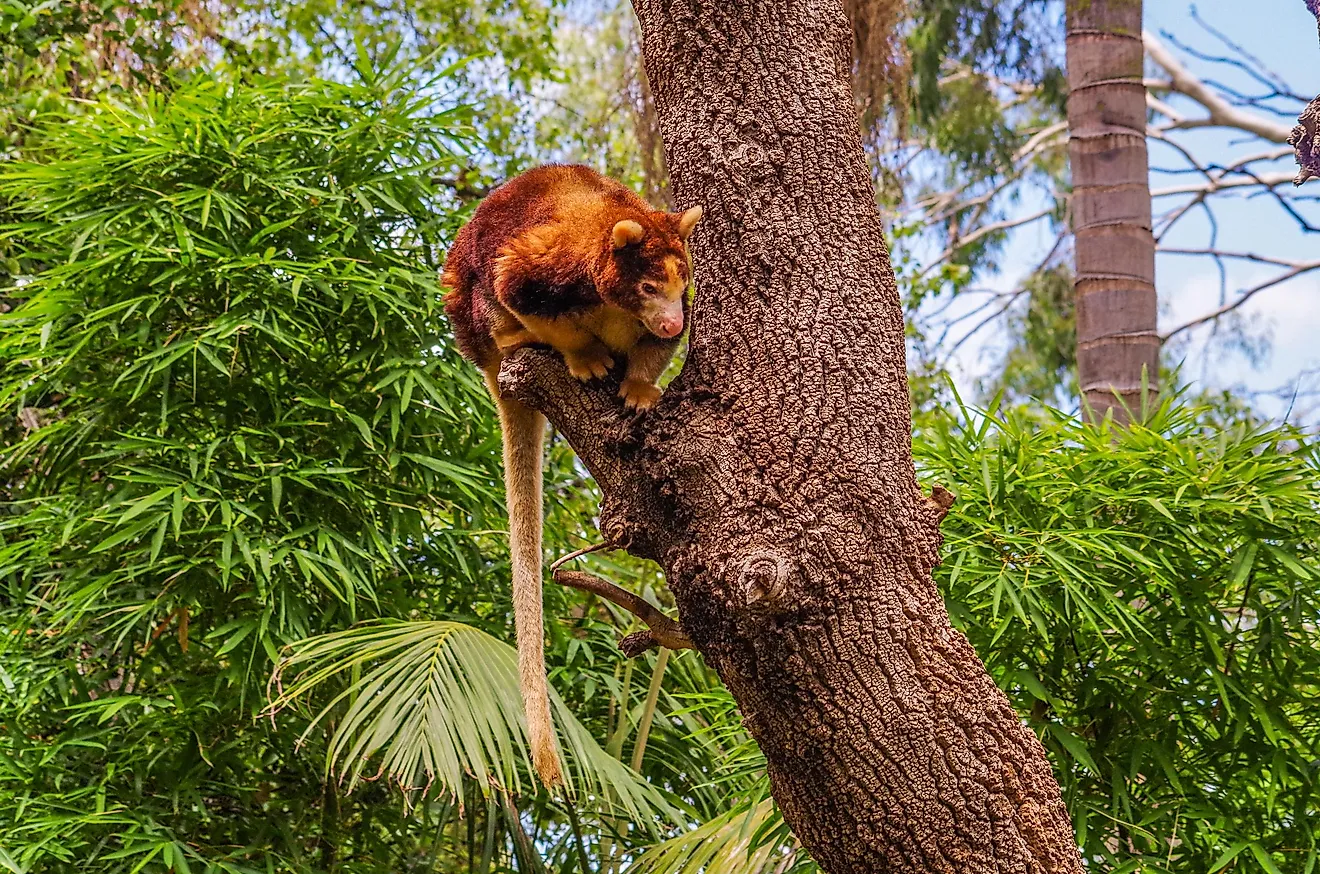Tree-Kangaroo Facts: Animals of Oceania

Tree-kangaroos are arboreal animals which spend most of their life on trees. They possess long tails which enable them to jump from one tree to another with ease. Tree-kangaroos are loners; only coming together for mating purposes. Most tree-kangaroos live in lowland rainforests and cloud forests which are at altitudes of 11,000 feet. The kangaroos have inhabited countries such as Australia, Indonesia, Umboi, New Britain, West Papua, and Papua New Guinea.
Physical Description
Tree-kangaroos grow up to lengths of 37-70 inches and weigh between 15 to 22 pounds. They have reddish brown coats. Tree-kangaroos have pale-colored bellies, whitish yellow faces, and reddish ears and feet. One of the most outstanding features of the tree-kangaroo is their long and narrow tail. They use their tails to easily move around trees. Additionally, the tree-kangaroos have curved nails on their hind feet. Their hind feet are longer and broader compared to the fore limbs. Tree-kangaroos also have small teeth which they use to feed on fruits, barks of trees, grass shoots, flowers, sap, birds, and leaves among others.
Unique Features of Tree-Kangaroos
Whenever temperatures soar higher than normal, the tree-kangaroos regulate their body temperature by licking their forearms. The evaporation of the moisture results in a cooling effect on their body. Another unique feature of the tree-kangaroos is that they are very agile and flexible on the trees. In fact, they can leap across trees 30 feet apart from each other and land safely on the ground from a height of 60 feet. However, when they walk on the ground, tree-kangaroos look awkward and clumsy. The reason for this is their long and heavy tails which hinder them from walking properly.
Reproduction
The monsoon wind season is the perfect time for the mating of tree-kangaroos. The gestation period takes between 39 and 46 days. The young ones, called joeys, are born when they are less developed. As a result, they continue their growth and development in their mother’s pouch. During that time they feed on milk. It takes up to 18 months for the joey to be ready for independent life. Male tree-kangaroos are mature sexually when they are 4.6 years old. On the contrary, the females become sexually mature at the age of 2.5 years. The average life span of a tree kangaroo is 20 years in captivity.
Conservation
Humans have been a major threat to the existence of tree-kangaroos through their activities. Such practices include accelerated deforestation and illegal hunting of the kangaroos targeting their fur and meat. Deforestation has led to habitat loss which exposes the kangaroos to predators like the domestic dogs. Generally, the tree-kangaroos have been listed by the IUCN as Critically Endangered. This category means the animals are at risk of imminent extinction. However, the specific species of tree-kangaroos that are critically endangered are Wondiwoi tree-kangaroos and Golden-mantled tree kangaroo. Others such as Lumholtz’s tree-kangaroo, Bennett’s tree kangaroo, and the Lowland tree-kangaroo are categorized by the IUCN as endangered.











